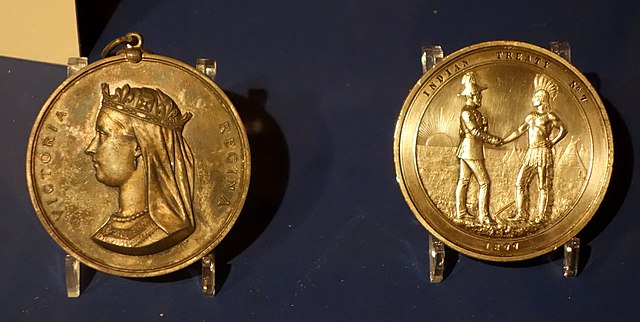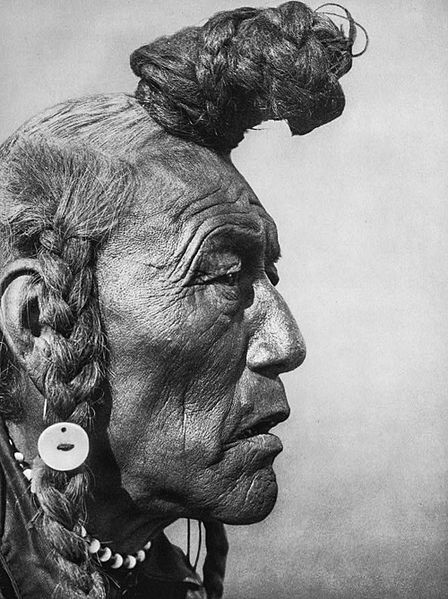Treaty 7 is an agreement between the Crown and several, mainly Blackfoot, First Nation band governments in what is today the southern portion of Alberta. The idea of developing treaties for Blackfoot lands was brought to Blackfoot chief Crowfoot by John McDougall in 1875. It was concluded on September 22, 1877, and December 4, 1877. The agreement was signed at the Blackfoot Crossing of the Bow River, at the present-day Siksika Nation reserve, approximately 75 km (47 mi) east of Calgary, Alberta. Chief Crowfoot was one of the signatories to Treaty 7. Another signing on this treaty occurred on December 4, 1877, to accommodate some Blackfoot leaders who were not present at the primary September 1877 signing.
A brass medal commemorating the treaty in the Glenbow Museum, 1877.
Presentation copy of the original Treaty 7. Printed on parchment. Text in black and red; blue and red border. Sourced from the Bruce Peel Special Collections at University of Alberta Library.
The Blackfoot Confederacy, Niitsitapi, or Siksikaitsitapi, is a historic collective name for linguistically related groups that make up the Blackfoot or Blackfeet people: the Siksika ("Blackfoot"), the Kainai or Blood, and two sections of the Peigan or Piikani – the Northern Piikani (Aapátohsipikáni) and the Southern Piikani. Broader definitions include groups such as the Tsúùtínà (Sarcee) and A'aninin who spoke quite different languages but allied with or joined the Blackfoot Confederacy.
Flag of the Blackfoot Confederacy
Six chiefs of the Blackfoot Confederacy in 1859
Blackfoot Confederacy
Chief Aatsista-Mahkan, c.1905.






